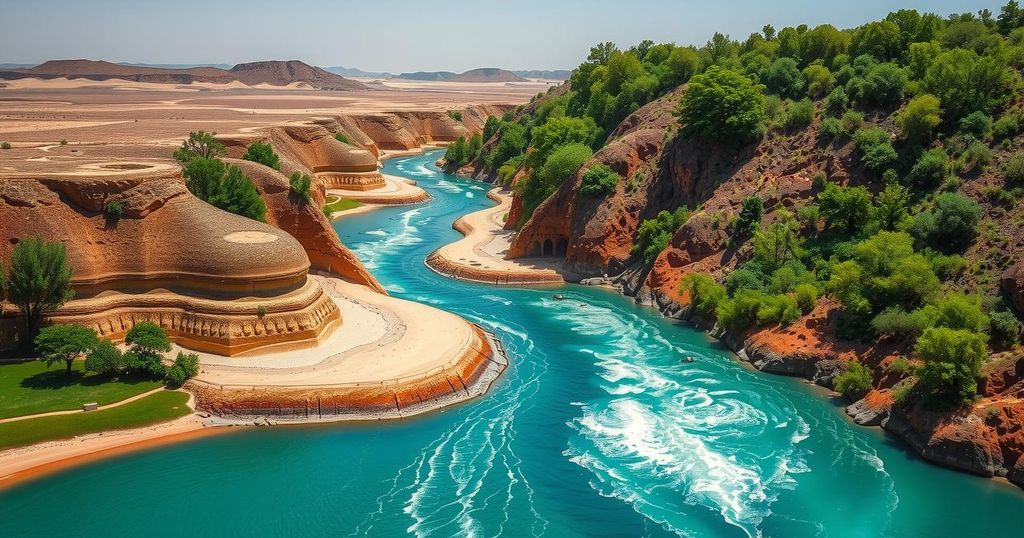Mexico has agreed to send water to the U.S. in compliance with a 1944 treaty, following President Trump’s tariff threats. The agreement aims to address water shortages affecting farmers and municipalities in Texas. Both nations plan to collaborate on a long-term strategy regarding treaty obligations.
In a significant diplomatic development, Mexico announced it would supply water to the United States to address shortages tied to a longstanding treaty. The agreement comes after U.S. President Donald Trump threatened to impose tariffs unless Mexico complied with its commitments regarding water resources, alleging that the nation was “stealing” water from Texan farmers.
The 1944 treaty mandates that the United States shares water from the Colorado River in exchange for flows from the Rio Grande, a boundary marked by natural resources. In response to mounting pressure, the Mexican foreign ministry confirmed that water from the Rio Grande would be sent immediately, with further transfers planned during the rainy season.
This decision reinforces Mexico’s intention to uphold its treaty obligations, described as significantly beneficial for the development of the northern border region. The U.S. State Department has expressed approval of the agreement, noting that it would aid farmers, ranchers, and municipalities in Texas’s Rio Grande Valley by alleviating water supply issues.
State officials also acknowledged Mexican President Claudia Sheinbaum’s efforts in reaching this compromise. Both nations have committed to creating a long-term strategy to consistently meet treaty requirements while also managing existing water debts. Currently, Mexico owes over 1.55 billion cubic meters to the U.S., with the treaty cycle ending in October.
This dispute arose as U.S.-Mexico relations grew tense under Trump’s administration, particularly concerning trade and immigration matters. The Colorado River’s dwindling water levels, attributed to drought and agricultural demands, have heightened frustrations among American farmers and lawmakers who argue that Mexico’s delays have been problematic.
Mexico cites that the Rio Grande basin is suffering from extreme drought conditions, which have persisted for two decades, severely complicating their water management options. Previous confrontations over this issue include a notable incident in 2020, where farmers in Chihuahua seized a dam, clashing with National Guard forces during protests, leading to tragic consequences.
In summary, Mexico’s commitment to provide water to the United States forms a crucial step in addressing past shortfalls under the 1944 water treaty. This cooperative agreement, brought on by President Trump’s tariff threats, highlights the ongoing tension between the two nations over resource management. Despite the challenges posed by drought and agricultural demands, both countries are now focused on ensuring compliance with treaty responsibilities moving forward. The importance of this agreement is evident, as it aims to support farmers and optimize water resources amid rising concerns about water scarcity.
Original Source: www.france24.com






